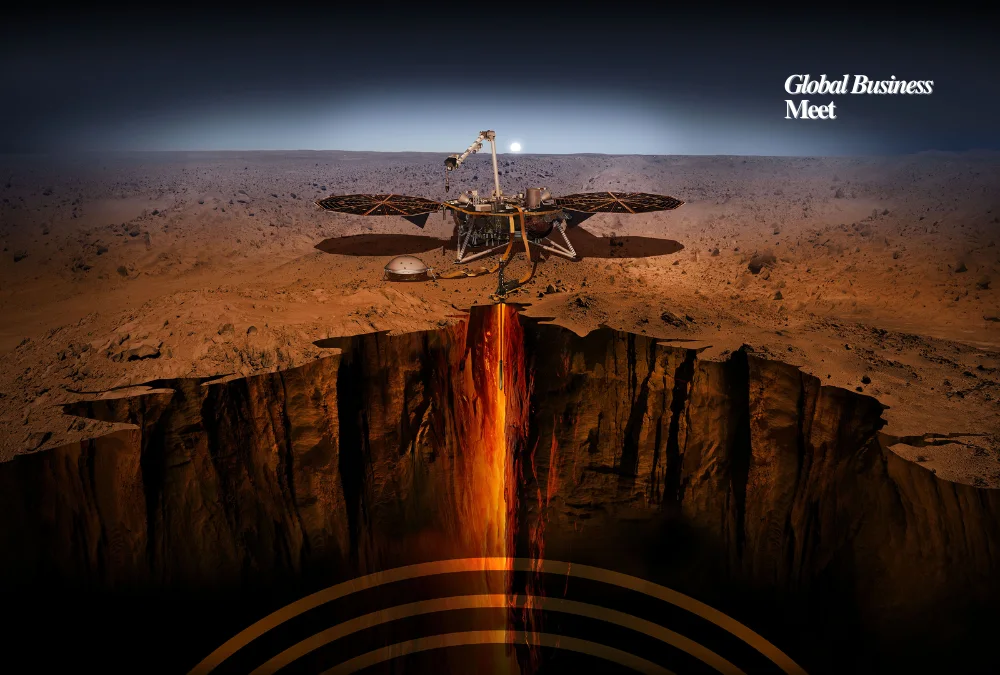
NASA has reported one of the most exciting updates yet from its Perseverance Rover. The space agency revealed that a Martian rock sample named Sapphire Canyon contains chemical traces that may be biosignatures, or remnants of ancient life that could have once existed on Mars.
For decades, both scientists and the public have been captivated by the question of whether life exists beyond Earth. This discovery brings us closer than ever to an answer.
The Sapphire Canyon Discovery
In July 2024, Perseverance collected the Sapphire Canyon sample from a rock known as Cheyava Falls in Jezero Crater. This location is one of the most promising sites for studying life on Mars because it once hosted an ancient river system. Flowing water is a critical ingredient for sustaining life, making Jezero Crater a focal point for exploration.
During its investigation, Perseverance’s high-resolution cameras spotted unusual, colorful patterns across the rocks. These leopard-like markings drew researchers’ attention and eventually led them to focus on the Sapphire Canyon sample. The sample contained minerals and chemical properties suggesting the possibility of biosignatures that could point to life in Mars’s distant past.
What NASA Scientists Are Saying
Dr. Becky McCauley Rench, an astrobiology program scientist at NASA, explained the importance of this milestone. “One of the most significant questions NASA has to answer is whether we are alone in the universe,” she said. “The current surface environment of Mars is not hospitable for life as we know it. However, if we determine that Mars once hosted life, it increases the likelihood that some form of life could survive underground today.”
Her statement highlights two crucial points: while Mars’s surface is currently too hostile for life, conditions billions of years ago may have been much more supportive. And if ancient microbial life existed, there is still a chance that it could persist in subsurface habitats shielded from radiation and extreme temperatures.
Does This Prove Life on Mars?
The discovery is a leap forward, but NASA scientists stress that it does not prove life existed on Mars. The findings suggest a strong possibility of ancient microbial life, but more testing is needed to rule out non-biological explanations.
Perseverance used advanced instruments, including X-ray lithochemistry and the SHERLOC scanner, to analyze the Sapphire Canyon sample. While the results are promising and peer-reviewed, conclusive proof of life will require further research. NASA and its global partners continue to study the data and will share updates as more evidence emerges.
The Kind of Life Mars Could Have Hosted
When people imagine alien life, they often picture intelligent beings from science fiction. In reality, what NASA is investigating is far simpler: microbial life.
The Sapphire Canyon sample revealed traces of vivianite and greigite—minerals closely tied to microbial activity on Earth. Vivianite is often found in peat bogs and swampy environments, while greigite can form as a byproduct of microbial processes. If these minerals formed in a similar way on Mars, they could point to ancient microbial communities that thrived in watery habitats.
So while this does not suggest intelligent “green Martians,” the potential discovery of microbes beyond Earth would still mark one of the most profound scientific breakthroughs in human history.
Challenges and Next Steps
Confirming life on Mars is no simple task. Scientists must rule out contamination or non-organic chemical origins. Performing such analysis millions of miles away adds another layer of difficulty. For this reason, NASA is collaborating with international partners and planning future missions to bring Martian samples back to Earth.
Despite these challenges, excitement remains high. This is the strongest lead yet in the search for extraterrestrial life. By combining Perseverance’s discoveries with upcoming missions and advanced testing, NASA hopes to provide clearer answers in the near future.
Why This Discovery Matters
If NASA ultimately confirms that Mars once hosted microbial life, it would redefine our understanding of the universe. It would prove that life is not unique to Earth and that the conditions to sustain it may be more common than previously thought.
For astrobiology, this breakthrough would open new frontiers, not only on Mars but also on other promising worlds like Europa and Enceladus, icy moons with subsurface oceans that could harbor life.
Conclusion
The discovery of possible biosignatures in the Sapphire Canyon sample represents an extraordinary step for NASA and humanity. Although it does not yet confirm life on Mars, it strengthens the possibility that microbial life thrived there billions of years ago.
The Perseverance Rover continues to push the boundaries of exploration, reminding us of the importance of seeking answers beyond our planet. As scientists pursue this evidence further, the age-old question, “Are we alone?”, feels closer than ever to being answered.










